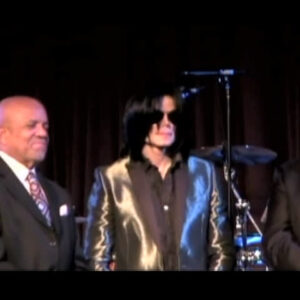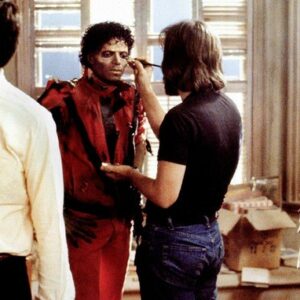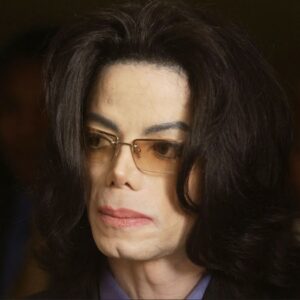In a world where musical genres often define artists, Pink has consistently defied categorization. Since her debut in the late 90s, the Pennsylvania native has created an eclectic body of work that blends pop, rock, and the soulful essence of 90s R&B. The foundations of her musical journey, rooted in the rich tapestry of rhythm and blues, set the stage for Pink to evolve into one of the most distinct voices in the pop world today.
Introduction: Pink’s Career and Musical Evolution
Alecia Beth Moore, known to the world as Pink, emerged in the late 1990s as a rebellious voice in an industry dominated by bubblegum pop and boy bands. Her unique sound, bold persona, and unapologetic authenticity set her apart, but it was her early connection to 90s R&B that laid the groundwork for her evolution. Born in 1979, Pink grew up during a time when R&B music was experiencing a golden era. Artists like Whitney Houston, TLC, and Mary J. Blige were dominating the charts, weaving powerful stories of love, heartbreak, and empowerment through smooth melodies and powerful vocal performances. For Pink, these influences were pivotal as she navigated her early career, giving her an edge in an industry hungry for fresh talent.
As the world of R&B in the 90s thrived, Pink found herself at the crossroads of genres, drawing from the emotional depth and vocal prowess of the era’s biggest stars. Her early works, especially in her debut album Can’t Take Me Home (2000), bear the unmistakable stamp of 90s R&B. Yet, even as she transitioned into rock and pop-punk in later years, Pink’s foundation in R&B never truly left her music, remaining a cornerstone of her emotional delivery and vocal style.
The Rise of 90s R&B
To understand Pink’s early influences, it’s essential to grasp the cultural and musical significance of 90s R&B. The genre, characterized by its blend of soulful vocals, smooth beats, and heartfelt storytelling, was an evolution of the rhythm and blues sounds of earlier decades. The 90s saw a surge of artists who redefined the genre, bringing together hip-hop rhythms with silky melodies and socially conscious lyrics. This era gave rise to legends like Whitney Houston, whose powerful ballads like “I Will Always Love You” became timeless anthems, and TLC, whose groundbreaking album CrazySexyCool tackled issues of love, identity, and self-respect.
What set 90s R&B apart was its emotional accessibility. The songs often told stories of heartbreak, triumph, and vulnerability, making it a genre that resonated with listeners on a deeply personal level. Singers like Mary J. Blige, also known as the “Queen of Hip-Hop Soul,” epitomized this fusion of raw emotion with smooth production, as she conveyed the struggles and triumphs of Black womanhood through her music. Other artists, such as Brandy and Aaliyah, brought a youthful energy to the genre, balancing innocence with emotional depth.
In this vibrant musical landscape, young artists like Pink were finding their voices. While the mainstream was often dominated by pop acts like Britney Spears and Backstreet Boys, Pink was more drawn to the soulful honesty of R&B. The genre’s authenticity resonated with her, and it’s no surprise that her early sound would reflect this.
Pink’s Early Musical Journey
Pink’s exposure to R&B began long before she graced the stages of international arenas. Growing up in a household with diverse musical influences, she was particularly drawn to the powerful voices of Whitney Houston and the edgy flair of TLC. These artists represented more than just catchy tunes—they embodied a spirit of individuality, strength, and emotional depth. For a young Pink, they were role models who taught her that music could be both personal and universal.
In her teenage years, Pink joined an R&B girl group called Choice, further immersing herself in the genre. Though the group never saw major commercial success, it was a formative experience for Pink. She honed her vocal chops, learning to channel emotion through her voice, and gained a deeper understanding of how R&B could be both soft and powerful.
Her break came when L.A. Reid, one of the most influential music executives of the time, noticed her potential. He signed her to LaFace Records, a label known for producing some of the biggest R&B stars of the decade. With this opportunity, Pink released her debut album Can’t Take Me Home in 2000, a record that was steeped in the 90s R&B tradition. The album featured smooth, catchy tracks like “There You Go” and “Most Girls,” both of which showcased Pink’s ability to blend R&B with a pop sensibility.
Blending Pop and R&B Elements
Pink’s early sound was a seamless fusion of R&B grooves with pop accessibility. Tracks like “There You Go” and “Most Girls” exemplify this blend, featuring slick production, catchy hooks, and lyrics that dealt with themes of independence and self-worth—hallmarks of the R&B genre. But unlike many pop artists at the time, Pink’s music had a rawness that was unmistakably influenced by the emotional honesty of R&B.
In “Most Girls,” for instance, Pink’s voice carries a soulful edge as she sings about rejecting societal expectations and choosing self-love over superficial relationships. The song’s blend of danceable beats with introspective lyrics was a perfect representation of how Pink was able to straddle the line between pop and R&B. It’s also worth noting that the production on Can’t Take Me Home was handled by some of the top names in R&B at the time, further cementing Pink’s place in the genre’s lineage.
Pink’s Vocal Style and Performance
Pink’s vocal style owes much to the R&B divas of the 90s. Like her idols Whitney Houston and Mary J. Blige, Pink’s voice is both powerful and emotionally resonant. Her ability to convey raw emotion through her vocal delivery has been a defining characteristic of her career, and it’s something she learned from listening to the greats of R&B.
Whether she’s belting out an anthem or delivering a quiet, introspective ballad, Pink’s voice carries a depth of emotion that is rare in the pop world. This emotional rawness, coupled with her impressive vocal range, sets her apart from many of her contemporaries. In live performances, Pink’s vocals are even more striking. She’s known for delivering high-energy, acrobatic performances while maintaining pitch-perfect vocals, a feat that few artists can match. The intensity and passion she brings to her live shows is reminiscent of the great R&B performers of the 90s, who often relied on their vocal prowess and stage presence to captivate audiences.
Evolution of Her Sound
As Pink’s career progressed, she began to experiment with different musical styles, moving away from the R&B-pop fusion of her early work and embracing rock, pop-punk, and even folk influences. However, even as she explored new genres, the emotional core of her music—so deeply rooted in 90s R&B—remained. Songs like “Family Portrait” and “Just Like a Pill” may have had rock instrumentation, but the vulnerability and emotional honesty in Pink’s vocals were a direct result of her R&B beginnings.
Her 2001 album Missundaztood marked a significant shift in her sound, leaning more toward rock, but it’s important to note that R&B’s influence never fully disappeared. The emotive power of her voice, the raw, unfiltered lyrics, and the way she connects with her audience are all hallmarks of the R&B tradition. Even in her more recent work, like the 2017 album Beautiful Trauma, Pink continues to infuse her music with the emotional depth and storytelling that defined the R&B genre she grew up with.
Legacy and Continued Influence
Pink’s early R&B-inspired sound not only helped her break into the music industry but also paved the way for future pop artists to blend genres. In an era where pop music often leans heavily on formulaic production, Pink’s willingness to incorporate the emotional depth of R&B into her music set her apart and influenced a new generation of artists.
Today, the influence of 90s R&B can be heard across the pop landscape, from the smooth vocal stylings of artists like Ariana Grande to the genre-blending experimentation of The Weeknd. Pink’s early work played a role in this shift, showing that pop could be both commercially viable and emotionally resonant.
Conclusion: Pink’s Ongoing Influence
The significance of 90s R&B on Pink’s early career cannot be overstated. It gave her a foundation in emotional storytelling, vocal power, and authenticity—qualities that have remained with her throughout her musical evolution. As Pink continues to push boundaries and evolve as an artist, her R&B roots are always present, reminding us of the genre’s enduring impact on her sound.
In a career that has spanned over two decades, Pink has remained one of the most authentic voices in pop music. Her journey from an R&B-influenced pop star to a genre-defying icon is a testament to her versatility, but at the heart of it all is the emotional honesty that 90s R&B taught her. And as the influence of that era continues to shape today’s music, Pink’s legacy as an artist who bridged the gap between genres will only grow stronger.





